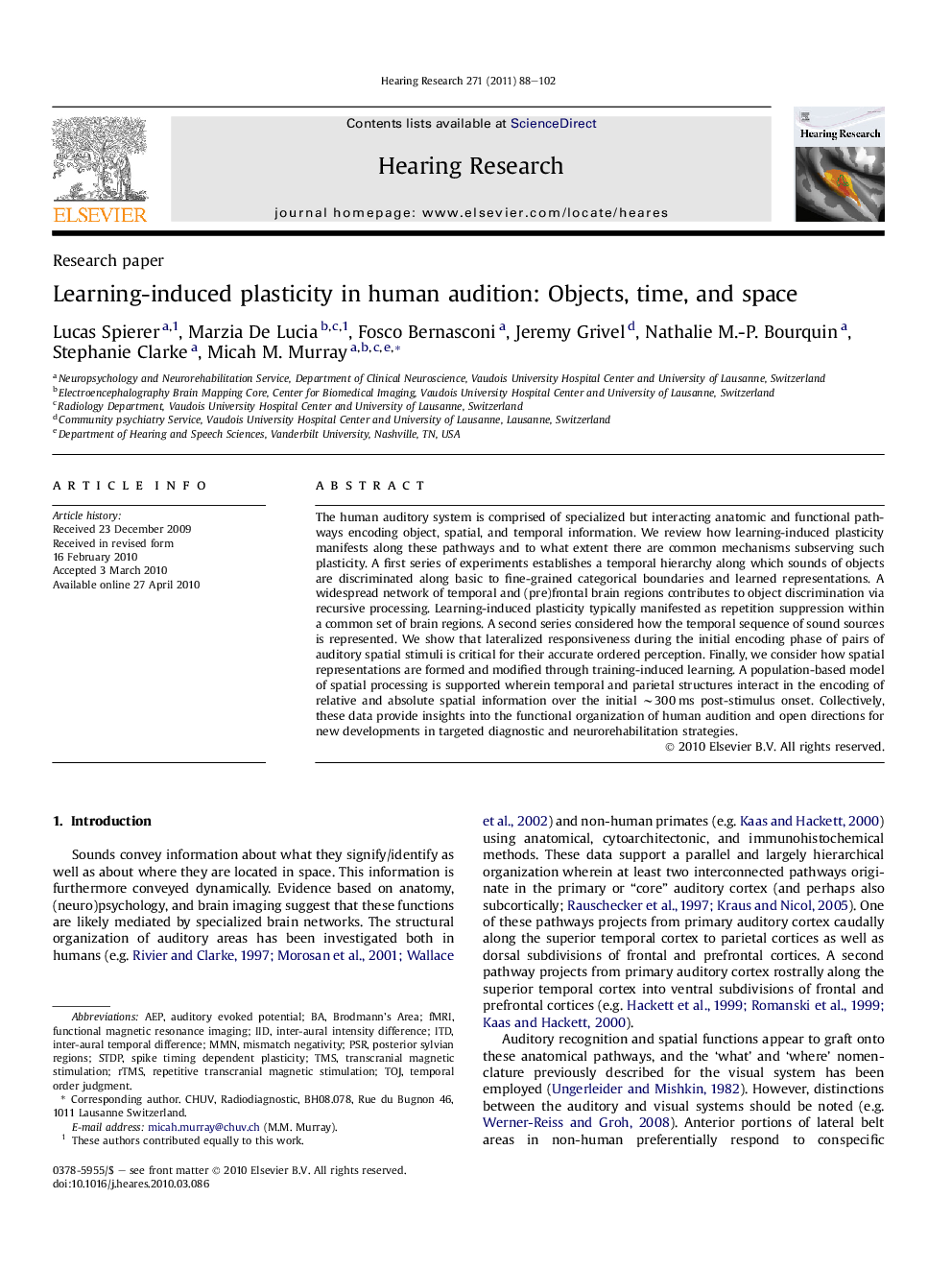| کد مقاله | کد نشریه | سال انتشار | مقاله انگلیسی | نسخه تمام متن |
|---|---|---|---|---|
| 6287713 | 1615629 | 2011 | 15 صفحه PDF | دانلود رایگان |
عنوان انگلیسی مقاله ISI
Learning-induced plasticity in human audition: Objects, time, and space
دانلود مقاله + سفارش ترجمه
دانلود مقاله ISI انگلیسی
رایگان برای ایرانیان
کلمات کلیدی
STDPrTMSTMSTOJITDAEPMMNIIDPSRRepetitive transcranial magnetic stimulation - تحریک مغناطیسی ترانس مغناطیسی تکراریTranscranial magnetic stimulation - تحریک مغناطیسی مغزfunctional magnetic resonance imaging - تصویرسازی تشدید مغناطیسی کارکردیfMRI - تصویرسازی تشدید مغناطیسی کارکردیtemporal order judgment - حکم زمانیSpike timing dependent plasticity - زمان انبساط پلاستیک وابسته استauditory evoked potential - شنوایی موجب بروز پتانسیلBrodmann’s area - منطقه برودمنmismatch negativity - ناسازگاری منفی
موضوعات مرتبط
علوم زیستی و بیوفناوری
علم عصب شناسی
سیستم های حسی
پیش نمایش صفحه اول مقاله

چکیده انگلیسی
The human auditory system is comprised of specialized but interacting anatomic and functional pathways encoding object, spatial, and temporal information. We review how learning-induced plasticity manifests along these pathways and to what extent there are common mechanisms subserving such plasticity. A first series of experiments establishes a temporal hierarchy along which sounds of objects are discriminated along basic to fine-grained categorical boundaries and learned representations. A widespread network of temporal and (pre)frontal brain regions contributes to object discrimination via recursive processing. Learning-induced plasticity typically manifested as repetition suppression within a common set of brain regions. A second series considered how the temporal sequence of sound sources is represented. We show that lateralized responsiveness during the initial encoding phase of pairs of auditory spatial stimuli is critical for their accurate ordered perception. Finally, we consider how spatial representations are formed and modified through training-induced learning. A population-based model of spatial processing is supported wherein temporal and parietal structures interact in the encoding of relative and absolute spatial information over the initial â¼300Â ms post-stimulus onset. Collectively, these data provide insights into the functional organization of human audition and open directions for new developments in targeted diagnostic and neurorehabilitation strategies.
ناشر
Database: Elsevier - ScienceDirect (ساینس دایرکت)
Journal: Hearing Research - Volume 271, Issues 1â2, January 2011, Pages 88-102
Journal: Hearing Research - Volume 271, Issues 1â2, January 2011, Pages 88-102
نویسندگان
Lucas Spierer, Marzia De Lucia, Fosco Bernasconi, Jeremy Grivel, Nathalie M.-P. Bourquin, Stephanie Clarke, Micah M. Murray,